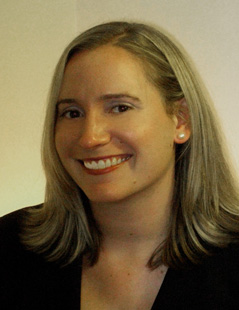
This post is based on content that has already appeared on the Propel Careers website and BioCareers.com. It is reproduced here with the author’s kind permission.
In today's competitive marketplace, being able to differentiate yourself is critical. LinkedIn is a useful tool for branding yourself, showcasing your background, building connections and job searching. It's hard to imagine how people functioned without it. Many people have asked for my advice on how to best use LinkedIn to search for jobs. Here are some tips for maximizing the value of this tool.
Build out your profile. When creating your profile, think about who will be reading this information. Your profile should explicitly state who you are, what experience you have, and what skills you master. Potential employers will almost certainly review your LinkedIn profile. The more professional you can make it, the more attractive you become as a candidate. This shows that you are serious about your career and your personal brand.
Your profile should include additional information, such as lab techniques you know, presentations you have given at large conferences, publications you’ve contributed to, etc. Many companies and recruiters use LinkedIn to search for individuals with specific skills. If you have these in your profile, you increase the chance of being "found" by an HR person when they search. If you do not have details listed, then your chance of being identified is almost zero.
If you are a student or postdoc, state when you think you will be done. Without this information, companies may be reluctant to contact you about jobs. Recruiting is extremely time-consuming, so the easier you can make it for companies to know what you want and when you will be available, the better.
To learn specifics about building and taking advantage of your LinkedIn account, use the LinkedIn learning center. Don't forget, your online presence is often the first thing that potential employers see, so don't lose the chance to make a positive first impression.
Have a professional photo. In general people are extremely visual, and they remember faces more than names. For example, if you meet someone at a networking event and send him or her a LinkedIn invitation afterwards, your profile picture will immediately help them to connect your name with your face.
Your image is part of your brand. Ideally you should have a professional take your photo. However, since most digital cameras work well enough for this purpose, that is also an acceptable way to go. Have a friend take your photo, stand against a blank wall, avoid objects of distraction, have a professional outfit on, and smile. This extra effort will go a long way.
Make sure that your name on LinkedIn is the same as the one on your resume. Potential employers will almost always look at an individual’s LinkedIn page as they are reviewing resumes. If they cannot find you, it creates a red flag. If the name on your resume is different than that on your LinkedIn account, make them the same so that you can be easily found.
Link to people you know. As you grow your network, only connect with trusted contacts. In this way, your network becomes personal and actually useful for you as you grow in your career. Aim for quality, not quantity. Adding a lot of people just to increase your numbers actually dilutes the value of your network.
Do not send a LinkedIn invitation to a hiring manager. Most people are very selective about their LinkedIn connections. If you ask to link to a hiring manager who does not know you, he or she may feel uncomfortable, and this could hurt your application chances.
Join groups. If you are looking to learn more about a certain area, join a LinkedIn group related to it. There are thousands of groups available. When you are new to the job search, using this feature is extremely valuable for getting a lay of the land. To find groups, search for them by keyword under group categories. Use the following link to learn more about groups in your LinkedIn profile. You may be surprised by how many groups are relevant to you. Also, you can become an active member or a group and share your expertise. This can build thought leadership.
When requesting a connection, mention where you met that person. People are busy and have a lot of things on their mind. The easier you can make it for people, the better. If you met someone at a international networking event and are following up with a LinkedIn request, you may want to write in the subject line: "International networking event follow up." In the body of the LinkedIn request, you might say something like: “Dear X, It was a pleasure meeting you at the international networking event on DATE. To follow up, I would like to link into you so that we can keep in touch.”
It is amazing how many times people don't do this. I wonder how many LinkedIn requests do not get answered because people cannot remember the context in which they met someone.
The connections you develop over time are a valuable part of your professional career, so respect your network, be responsive, and finally, keep it human.
Lauren Celano (lauren@propelcareers.com) is the co-founder and CEO of Propel Careers, a life science search and career development firm focused on connecting talented individuals with entrepreneurial life sciences companies.
